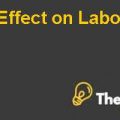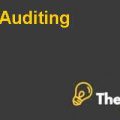Subprime Mortgage Crisis Case Study Solution
Introduction
Subprime mortgage crisis was a nationwide banking emergency in the United States that contributed to the financial crisis in 2007-2009. Subprime mortgage refers to the type of loan offered to individuals with poor credit history, or those who cannot qualify for the conventional loan from the bank. The subprime mortgage loans are very risky in terms of poor credit ratings of individuals, thus they have to give huge mortgage rates, and interest rates to compensate the risks associated with mortgage.
There are many complications and complexities that needs to be understood. Because, the subprime mortgage crisis has been fueled by many chains of processes that stuck in between, and disturbed whole process from the banks to financial institutions, and from special purpose vehicle to the pool of investors. Each entity, firm, bank, and investors were affected by these subprime mortgage crises. Since, subprime mortgage market was considered very risky, but on the other hand, it also provided good return to investors in the market.
Subprime Mortgage Crisis Harvard Case Solution & Analysis
The most important matter is that how subprime mortgage crisis formed in the United States that has strict regulations, and constant reviews. Meanwhile, it is vital to understand how it started, and what the potential reasons behind crisis were, and how it affected the national economy of US, and affected the whole world, and led to global financial crisis. Similarly, how that crisis could have been avoided, and what were potential resolutions, and alternative mechanism in response to crisis, and was it possible to predict the financial crisis before.
Background
Financial crisis refers to sudden large decline in the value of any underlying asset. The mortgage backed financing is a type of loan offered to individuals by keeping asset as collateral to compensate the risk of default of client. If, the mortgage loan offered to individuals for purchasing of property, and same property is kept as collateral at bank, and borrower pays installments and principle on agreed time period. So, this is a normal situation, however, if the same loan is offered to individual with low credit history, then there are huge chances that he would become default on loan payment.
Thus, interest rates on these mortgages are very high. Meanwhile, the life of these mortgages is from 10-30 years. Which means if a bank has given mortgage loan of $0.5 million dollars to 1000 different individuals in a country, then bank has an outflow of $500 million that would be collected over a long period of time. Hence, banks through financial institutions involve in securitization process to decrease the burden on their balance sheets, and get back money invested into mortgages. Furthermore, securitization is a process by which a bank could sell assets back mortgages to pool of investors with the help of financial institution.
Still, these financial institutions form special purpose vehicle which issues asset backed securities (ABS), or the collateralized debt obligations (CDO) to the pool of investors in the market. Whereas, amount raised through sell of securities is given back to the banks. In this way amount invested by bank into mortgage loans is again in the hand of bank, so it could invest somewhere else. On the other hand, the pool of investors that has purchased the assets backed securities from the special purpose vehicle would receive the high return on their bonds, or securities.
Financial Crisis
Subprime mortgage market was a very risky market in terms of default of borrowers who had loans from the bank on high rates due to their poor credit ratings, and uncompleted documentation as well. The securitization process was a major contributor to rising complications in the market. Because, it had lined up all risk elements together. Therefore, risk involved in the securitization process could not be mitigated, or diversified. It was completely an undiversified risk in this process due to complications, and complexities in the process, and involvement of many banks, financial institutions, and investors.
There was complete chain from individual who acquired mortgage loan from bank, bank itself, financial institution, special vehicle purpose, and pool of investors in the market. Meanwhile, if the individuals those who have acquired mortgage loan become default, then the whole chain would be disturbed, and pool of investors would not get return due to the nonpayment of borrower. The market price of these securities would decline due to investors’ concern, every investor would be in a lower position to sell security.
Therefore, the whole chain of investors was disturbed, and on the other hand, when borrowers saw that prices of properties were declining, they left the property, and became defaulters. So, demand in the market for property was declining, and supply of property was increasing which misbalanced the equilibrium in the market, and it led to sudden decline in real estate properties prices. Similarly, borrowers stopped paying mortgage installments, and investors’ concern increased. So, banks become default on payments and financial institutions could not pay to special vehicle purpose, and therefore SPV also could not pay to investors..............
This is just a sample partial work. Please place the order on the website to get your own originally done case solution.











